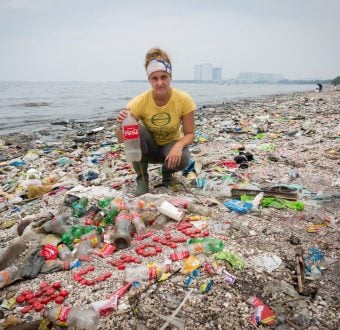I recently visited an Environmental Protection Agency (EPA) Reading Room to look at a few chemical facilities’ Risk Management Plans and was struck by the severity of potential accidents. I found one facility in St. Paul, Minnesota that endangers over 1 million people. That facility is one of 88 known to endanger over 1 million people, while an additional 378 facilities put 100,000+ people at risk. By requiring these high-risk facilities to switch to safer processes, the President and the EPA could significantly improve the safety of millions of Americans. It’s only taken me a few days of research to realize how dangerous these facilities are and how simple it would be to secure them. Unfortunately, the EPA has been dragging its feet on this issue for over two decades.
In 1993, the EPA first proposed regulations authorized by the 1990 Clean Air Act. By 1995, the agency was still requesting comments on proposed rules and remained vastly under-informed about the thousands of chemical facilities and the threats they pose to surrounding communities. Only after 9/11 did lawmakers and the EPA also acknowledge that these facilities are attractive terrorist targets. This realization prompted the then head of the EPA, Christine Todd Whitman, to draft stronger regulations that would have for the first time required facilities to reduce catastrophic hazards. Whitman established a 12-18 month implementation timeline for industry compliance with these common sense regulations. The Bush administration ultimately stifled these efforts.
If Whitman’s proposed regulations had been implemented, millions of Americans would have been living in communities no longer at risk of a catastrophic chemical facility accident or terrorist attack since December 2004. It’s been 13 years since Whitman’s initial call for common sense safety standards, and over 100 million Americans remain at risk of an accident or attack on a chemical facility.
Instead the only new regulations we’ve seen are security rules ghostwritten by the chemical industry lobby that are largely unenforceable. They are the Department of Homeland Security’s (DHS) Chemical Facility Anti-Terrorism Standards (CFATS) authorized in 2006 and renewed in 2014. CFATS forms the basis of our chemical security, yet it exempts thousands of facilities, including all drinking water and wastewater treatment plants and some of the nation’s highest risk chemical facilities. It also bars the DHS from requiring inherently safer technologies (IST). The Obama administration formally called for closing this security gap and requiring IST at numerous congressional hearings by EPA and DHS witnesses since 2009, demonstrating the President’s longstanding support for increased chemical safety. As a Senator in 2006, Obama described high-risk chemical facilities as “stationary weapons of mass destruction spread all across the country” and included stronger chemical facility regulations in his 2008 campaign platform.
After the tragic 2013 fertilizer explosion in West, Texas that killed 15 people, President Obama issued an Executive Order directing the EPA and other agencies to modernize chemical plant safety rules. Although the EPA has pledged to complete new regulations by 2016 to comply with the Executive Order, it has postponed even starting the rulemaking process until September of this year. It usually takes 12-15 months to finalize a rule. If the EPA continues at this glacial pace, a new President or Congress could easily kill the new rules via the Congressional Review Act that Bush used against workplace safety rules in 2001. To avoid this, the EPA should move up its rulemaking start date to June of this year. That would at least give the EPA a chance to finalize new rules by June of 2016. We may know more on June 19th when the EPA, DHS, and OSHA will hold a webinar to update the public on their rulemaking progress.
In the meantime, communities are becoming impatient. There have been over 350 chemical accidents since the explosion in West, Texas. How many more disasters will it take until the EPA finishes a job it started twenty years ago? Take action and tell President Obama to use his authority to prevent chemical disasters today.
***Chronology of the EPA “Considering” Chemical Disaster Prevention***
- 1995 “EPA does not favor inclusion of a specific requirement in the initial program for an analysis of the inherent safety of processes…EPA is considering further study of this issue with all stakeholders and requests comment on this issue.”
- 2002 Following the 9/11 attacks, EPA Administrator Christine Todd Whitman proposed regulations in 2002 following the 9/11 attacks but they were scuttled by the Bush White House. She has since urged Obama to issue new safety rules.
- 2009 Peter S. Silva, EPA Assistant Administrator for Water, testified in favor of requirements to use inherently safer technologies (IST) also known as safer chemical processes.
- 2010 Cynthia Dougherty, EPA’s Director of the Office of Ground Water and Drinking Water of the Office of Water testified in favor of requirements to use inherently safer technologies (IST) also known as safer chemical processes.
- 2011 Rand Beers, Department of Homeland Security Undersecretary testified in favor of requirements to use safer technologies (IST) also known as safer chemical processes.
- 2012 EPA’s National Environmental Justice Advisory Council recommended that the “EPA use its authority under the 1990 Clean Air Act section 112 (r) to reduce or eliminate these catastrophic risks, where feasible, by issuing new rules and guidance…”
- 2012 EPA says they will address a petition from 54 organizations urging that they use their Clean Air Act authority to require inherently safer technologies (IST).
- 2013 President Obama issued Executive Order 13650 giving federal agencies such as the EPA, DHS and OSHA nine months to propose ways to modernize their chemical facility safety and security policies.
- 2014 In a multi-agency report to the President the EPA pledged to complete new regulations by 2016 including possible requirements for inherently safer technologies (IST)
- 2015 EPA plans to issue “proposed” regulations in September 2015 with the expectation of completing them in 2016.


